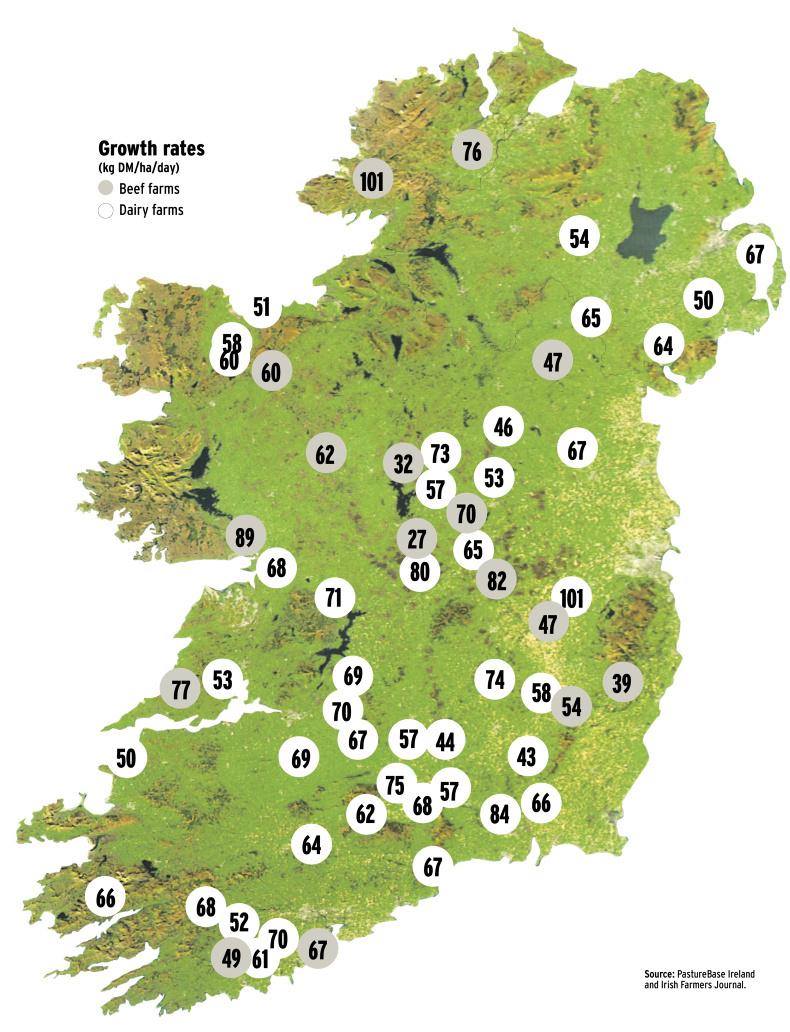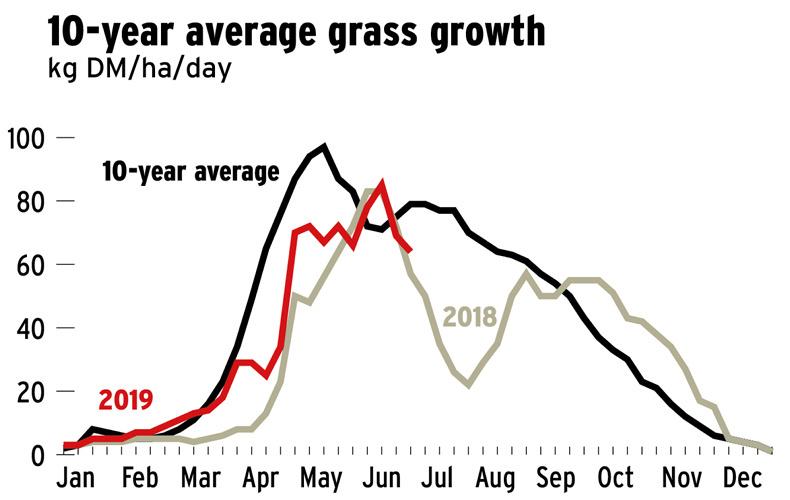Nationally, the current average growth rate is at 62kg DM/ha/day with little regional variation. It’s a slight drop from last week’s growth rate of 68kg DM/ha/day. Fair, it’s only a small drop but what it does mean is that growth is slipping closer to demand. Farms stocked at three cows and three calves per hectare (not uncommon at this time of the year with second cut silage ground still out of commission) are looking at a daily demand of 50-60kg DM/ha. As calves are thriving, this is constantly on the rise.
Controlling grass quality is the big issue at the moment. Grass has seeded out and gone stemmy. High proportions of stem reduces the palatability, utilisation and feeding value of the sward. To rectify the problem, this stemmy grass needs to be cleaned-out tight to the ground, allowing fresh shoots to grow again. To do this, it’s a balancing act between mowing, grazing and topping.

Mowing surplus grass for bales should be the first consideration. However, we have already identified that the current growth rate is only marginally ahead of demand so we need to be cautious about how much is removed. Take into consideration your average farm cover (AFC). This will give an indication of what grass is already on the farm. Target AFC is worked out as daily demand x target days ahead. Right now, I’d be favouring a target day ahead figure of 14. If your AFC is significantly higher than the target then there is scope to take out bales now. If it’s not, I’d be looking at grazing and topping too.

Strip grazing is the best way to graze heavier covers. Moving the fence daily or every second day will increase your workload but it’s the best way to ensure good utilisation and a tight grazing. If you are pushing suckler cows to graze tighter, be sure to have the electric fence wires raised to allow calves graze on ahead. Topping should be the final option but it will serve a purpose.
Each field should get a topping once this summer but spread this over two/three rotations.
If everything is topped in the same rotation, cattle will go around the following rotation of regrowths at lightning speed and you could go from a surplus to a deficit very quickly.






 This is a subscriber-only article
This is a subscriber-only article










SHARING OPTIONS: